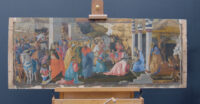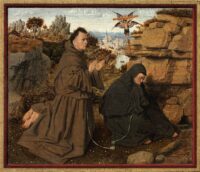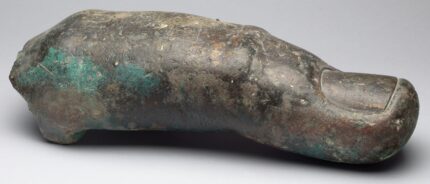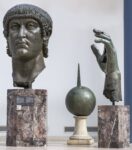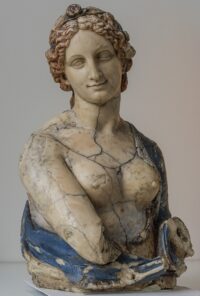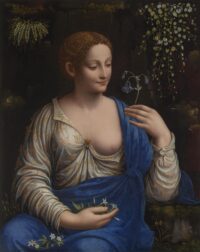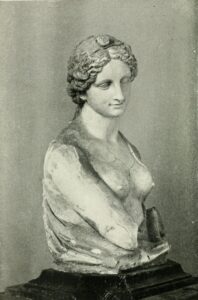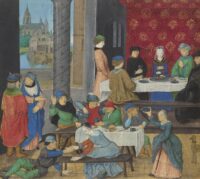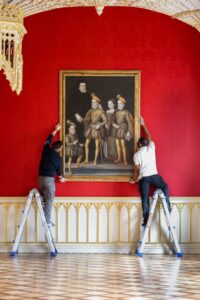 A portrait of Catherine de’ Medici with four of her children has returned to Strawberry Hill House 279 after Horace Walpole first bought it and 179 years after it was sold away with the rest of his vast collection. It is the only surviving contemporary portrait of Catherine de’ Medici, one of the most powerful queens in French history. It was acquired from its private owners as part of the Acceptance in Lieu scheme that allows donation of important items of cultural patrimony to pay off a tax bill. In this case the portrait has been accepted in lieu of of £1 million in taxes.
A portrait of Catherine de’ Medici with four of her children has returned to Strawberry Hill House 279 after Horace Walpole first bought it and 179 years after it was sold away with the rest of his vast collection. It is the only surviving contemporary portrait of Catherine de’ Medici, one of the most powerful queens in French history. It was acquired from its private owners as part of the Acceptance in Lieu scheme that allows donation of important items of cultural patrimony to pay off a tax bill. In this case the portrait has been accepted in lieu of of £1 million in taxes.
It was painted in 1561 by the workshop of Francois Clouet and depicts Catherine with her arm around her eldest surviving son 10-year-old Charles, who was then technically King Charles IX although Catherine ruled as his regent. His younger brother Henry, then Duke of Angoulême and Duke of Orléans, who would succeed Charles as monarch of France in 1574, stands to his right. Between them is their sister, Margaret, the future queen consort of Navarre who would become queen of France when her husband Henry III of Navarre became Henry IV of France. She was eight years old when this portrait was painted. In the bottom left is six-year-old Francis, Francis, Duke of Alençon and Anjou.
Dr Silvia Davoli, the curator at Strawberry Hill House, said Catherine’s gestures are highly symbolic, as she simultaneously presents the young monarch and protectively keeps him close to her, reflecting the substantial influence she held over the political life of France and the control and guidance she exercised over her son’s rule. It also shows the bond between members of the family – they are close and look alike.
It’s not known how such an important royal portrait found its way to England. Walpole, who was a huge Medici fanboy and once considered writing a history of the family, bought it for £25 from Hertfordshire county MP Thomas Plumer Byde. The Byde family had connections to the French monarchy that could be a possible explanation for how the portrait crossed the Channel. Thomas’ grandfather was paid 300 guineas by Louis XIV to oppose a separate peace between England and the Dutch republic that would end the Second Anglo-Dutch War (1665-1667). Maybe the Bourbon Louis threw in a portrait of the last Valois kings and their mum to sweeten the pot.
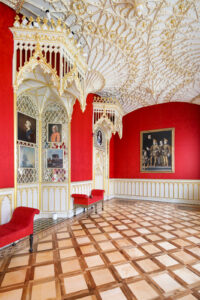 We don’t know exactly when Walpole first installed the painting in his Gothic Revival mansion in Twickenham, London, but it appears in the 1774 inventory of the Strawberry Hill collection. At that time it was hanging in the west end of the first floor Gallery, the same room where the Giambologna ostrich strutted its stuff. The portrait suffered the same fate as the ostrich: it was sold by Horace Walpole’s wastrel great-nephew in his everything-must-go firesale of the contents of Strawberry Hill, art collection to doorknobs, in April 1842.
We don’t know exactly when Walpole first installed the painting in his Gothic Revival mansion in Twickenham, London, but it appears in the 1774 inventory of the Strawberry Hill collection. At that time it was hanging in the west end of the first floor Gallery, the same room where the Giambologna ostrich strutted its stuff. The portrait suffered the same fate as the ostrich: it was sold by Horace Walpole’s wastrel great-nephew in his everything-must-go firesale of the contents of Strawberry Hill, art collection to doorknobs, in April 1842.
The monumental portrait has only been seen in public three times in the past 126 years, most recently at a Strawberry Hill exhibition at the V&A in 2010. It will now be on permanent public display in the Gallery at Strawberry Hill House which reopens to visitors on May 17th. Dr. Davoli again:
“The acquisition of this unique portrait of Catherine de’ Medici with her Children is important not just for its great intrinsic value and meaning, but also because it gives us, at Strawberry Hill House, the possibility to reconstruct one of the many historical narratives that were at the basis of Walpole’s collecting strategies. This portrait speaks to us of Walpole’s interest in the Italian and French Renaissance, its protagonists and great art.”
